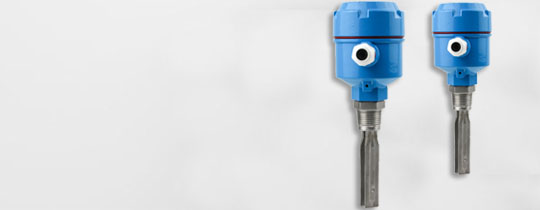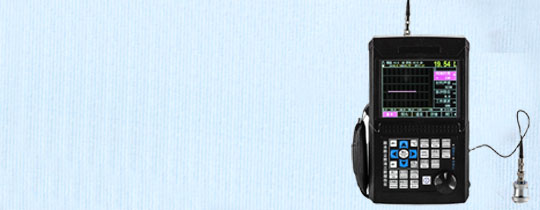
Outline drawing of contactless magnetic switch for cylinder D-A93
Zhuoxin Company sells cylinder magnetic switch D-A93 with a one-year warranty. Welcome to purchase. Outline drawing of D-A93 cylinder contactless magnetic switch
- D-A93
- ZHUOXIN
- 24v-110v-220v-380v
- IP65
- TT, Paypal, Credit card, Western union
- +86-15163766288
- Zhuoxin Company sells cylinder magnetic switch D-A93 with a one-year warranty. Welcome to purchase. Outline drawing of D-A93 cylinder contactless magnetic switch
Description

D-A93 cylinder contactless magnetic switch appearance diagram 1. Product description: Magnetic switch means to be induced by a magnet, which is; Magnetism; There are several types of magnets, including rubber magnets, permanent magnet ferrite, sintered neodymium iron boron, etc. commonly used in the market. The switch is like a reed switch. Dry reed tube, also known as dry tongue reed tube, is a passive electronic switching element with contacts. It has a simple structure and small size, making it easy to control and other points. The outer shell is usually a sealed glass tube, which contains two iron elastic circuit boards and is also filled with inertia. Usually, the two pipes made of materials in a glass tube are separated. When a magnetic substance approaches a glass tube, under the action of magnetic field lines, the two huangpian inside the tube are magnetized and attracted to each other, and the huangpian will be attracted together, making the circuit connected to the node connected. After the disappearance of the external magnetic force, the two pipelines separated due to their own elasticity, and the circuit was also disconnected. Therefore, as a circuit switching device that uses magnetic field signals to control, reed switches can be used as sensors for counting, limiting, and so on (mainly used in the production of door and window magnets in Anfangxing), and are also widely used in various communication devices. 2、 The characteristic magnetic switch cylinder is used to detect the position of the cylinder stroke, without the need for machine controlled valves (or stroke switches) and their mounting brackets at both ends of the stroke, and without the need for collision blocks at the end of the piston rod, making it convenient to use and structurally compact. Due to its reliability, long lifespan, cost, and switch response time, it is widely used. 3、 The working principle of this switch is to install a magnetic switch on the outside of the cylinder barrel of the cylinder. A cylinder can accommodate various types of cylinders, but the cylinder barrel is made of materials with weak magnetic conductivity and strong magnetic isolation, such as hard aluminum, stainless steel, brass, etc. Install a magnetic ring of a rubber magnet on a non-magnetic piston. When the moving magnetic ring of the piston approaches the switch, the two flanges of the tongue spring switch are magnetized and attracted to each other, and the contacts close; When the magnetic ring moves away from the switch, the circuit loses excitation and the contacts open. When the output point is closed or disconnected, an electrical signal is issued (or the electrical signal disappears) to control the corresponding solenoid valve to complete the switching action. As shown in the following figure. Magnetic switches generally have indicator lights for switch action and overvoltage protection circuits inside, which are encapsulated in a resin shell. To understand the working principle of magnetic switches, first we need to understand what they are used for. Let's take the cylinder as an example. In terms of the cylinder, the main function of the magnetic switch is to check the operation of the cylinder piston. When the magnetic ring of the cylinder moves and slowly approaches the magnetic induction switch, the magnetic plate of the magnetic switch will be induced, causing the electric shock to close and generate a signal; When the magnetic ring of the cylinder leaves the area of the induction switch, the magnetic plate loses its magnetic induction, causing the electric shock to disconnect and no signal will be generated. This allows for checking the position and movement of the cylinder piston, thereby controlling the corresponding solenoid valve action. Because magnetic switches are a hazardous product, non operators are not allowed to touch them. There are actually many precautions about magnetic switches, especially for products in this type of voltage circuit, you must be very careful. During the installation process, there should be no remaining substances in the surrounding air, and the magnetic switch should not be subjected to significant impact force during installation; During installation, do not connect with other voltage lines; The installation of two magnetic switches should be installed with a distance of more than 3mm, which is also for safety reasons. Magnetic switch is a circuit switching device that uses magnetic field signals to control, also known as a magnetic control switch. According to the working principle, it can be divided into two types: contact type (contact magnetic reed type) and contactless type (contactless electric crystal type). What is the difference between contactless magnetic switches and contactless switches? 1. Electrical lifespan: Magnetic switch with contact: The nominal lifespan of magnetic switch with contact is 5 million cycles. However, depending on the load carried, the lifespan of the contactless magnetic switch may also vary: the internal of the contactless magnetic switch has a semi permanent lifespan due to the lack of mechanical contacts. Note: Semi permanent does not mean having no lifespan limit. 2. Oscillation phenomenon: Magnetic switch with contact points: The spring contact points produce bouncing during opening and closing, which can cause oscillation in the output signal. Contactless magnetic switch: Due to the use of a transistor for ON/OFF operation, it will not cause oscillation in the output signal. 3. Switching current: Magnetic switch with contact: Due to the limitation of the current that can flow through the tongue spring contact, it cannot be opened or closed with large capacity. Contactless magnetic switch: Although there are certain limitations on thermal loss based on transistors, it has a larger upper limit capacity than magnetic switches with contacts. In addition, there is a certain margin to ensure space for changes in instantaneous time, such as sudden currents. How magnetic switches are wired? BK (black): usually the output line, and the output is normally open. BN (brown): Generally, it is a power cord connected to the positive pole of the power supply. Bu (blue): Generally, it is a power cord connected to the negative pole of the power supply. Wh (white): Generally, it is the output line, and the output is normally closed. NPN: Connect the black end to the load, and connect the other end of the load to the positive pole of the power supply. PNP: Connect the black end to the loadConnect the other end of the load to the negative pole of the power supply. [Working principle of magnetic switch - Two wire magnetic switch working principle - How to connect two wires of magnetic switch] 1. There is a difference between two wire and three wire proximity switches. Three wire proximity switches are further divided into NPN and PNP types, and their wiring is different. 2. The wiring of the two wire proximity switch is relatively simple. The proximity switch is connected in series with the load and then connected to the power supply. 3. Wiring of the three wire proximity switch: connect the red (brown) wire to the positive end of the power supply; Connect the blue wire to the 0V end of the power supply; The yellow (black) line represents the signal and should be connected to the load. And the other end of the load is connected as follows: for NPN type proximity switches, they should be connected to the positive end of the power supply; For PNP type proximity switches, they should be connected to the 0V end of the power supply. 4. The load of proximity switches can be signal lights, relay coils, or digital input modules of programmable logic controllers (PLCs). 5. Special attention should be paid to the type selection of the three wire proximity switch connected to the PLC digital input module. PLC digital input modules can generally be divided into two types: one type has a common input terminal of 0V power supply, and the current flows out from the input module (Japanese mode). In this case, NPN type proximity switches must be selected; Another type of common input terminal is the positive end of the power supply, and the current flows into the input module, which is a trap type input (European mode). In this case, it is necessary to choose a PNP type proximity switch. Don't make the wrong choice. 6. The two wire proximity switch is limited by working conditions, and when conducting, the switch itself generates a certain voltage drop. When cutting off, there is also a certain amount of residual current flowing through. Therefore, consideration should be given when selecting it. Although the three wire proximity switch has an additional wire, it is not affected by adverse factors such as residual current and works more reliably. 7. Some manufacturers will approach the switch's&quo; Normally open; And&quo; Normally Closed; Signal is simultaneously led out or other functions are added, in which casePlease wire according to the product manual& D-A93 Cylinder Contactless Magnetic Switch Outline Drawing  ;
;
 ;
;
Tags
Get the latest price? We'll respond as soon as possible(within 12 hours)

















